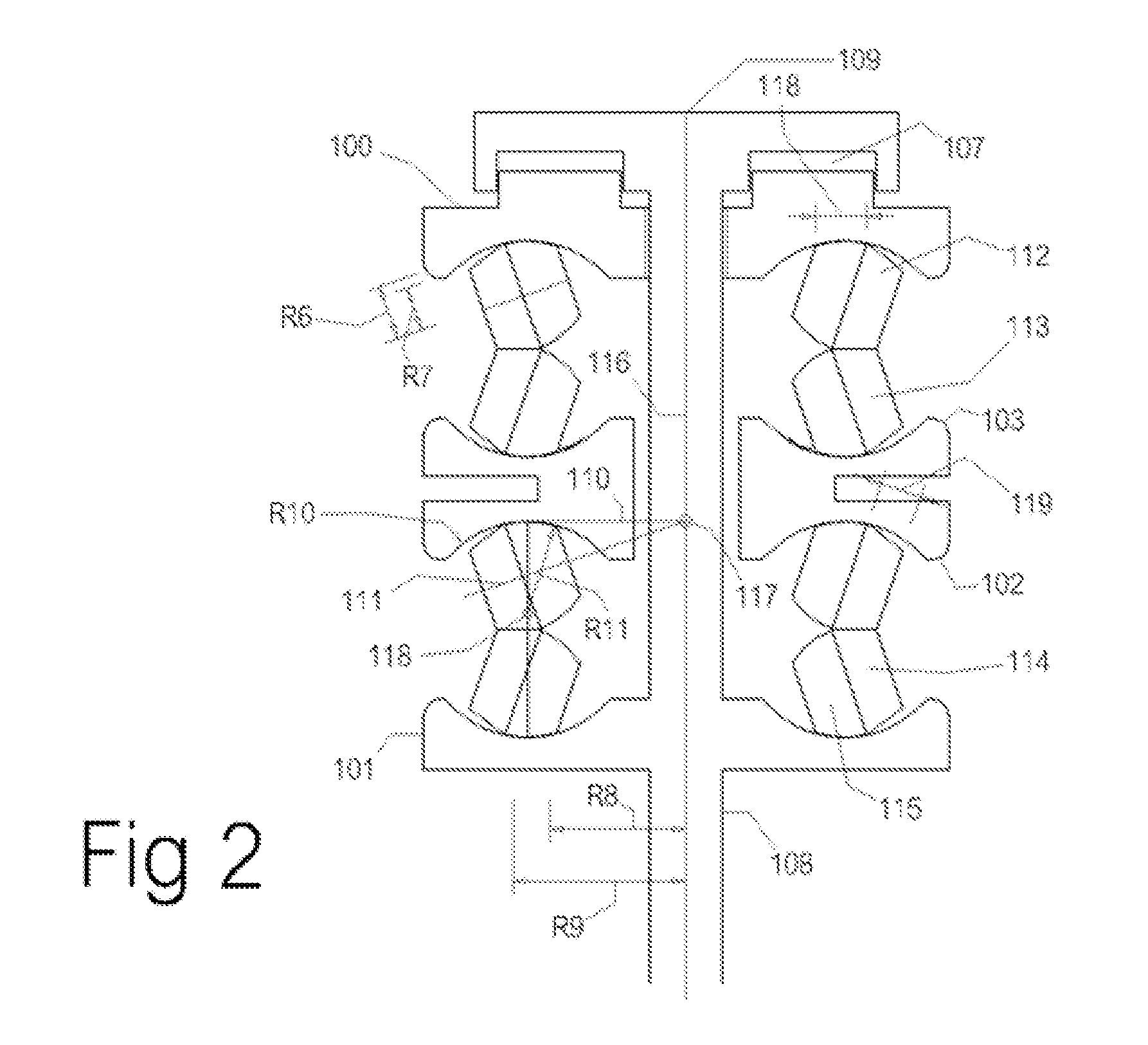Full toroidal traction drive
a full toroidal, traction drive technology, applied in the direction of friction gearings, belts/chains/gearrings, mechanical equipment, etc., can solve the problems of inability to maintain a sufficient ratio change, energy loss associated with supporting rotational loads using bearings considered too high by most designers, and the mechanical problem of full toroidal variator
- Summary
- Abstract
- Description
- Claims
- Application Information
AI Technical Summary
Benefits of technology
Problems solved by technology
Method used
Image
Examples
Embodiment Construction
[0052]A first aim of the invention is to reduce the differential velocities that exist between the rollers and the discs to almost zero in at least one ratio position.
[0053]In order to achieve the first aim, a Full Toroidal Variator that includes the input and output discs shafts bearings and clamping device is selected. FIG. 2 shows diagrammatically such an arrangement. Two rollers 112 and 113 replace the conventional single rollers. These rollers are made with a generally conical rolling surface 114 on which they roll on each other and a generally toroidal surface 115 on which they roll on the discs.
[0054]The conical surface could also be formed with a very large crown radius or with curved edges so as to reduce stress concentrations at the edges of the conical surfaces. This modification is often associated with the design of fixed ratio traction drives involving cylinders or cones. Although not exactly conical the surfaces will control the actual angle adopted by the rollers rel...
PUM
 Login to View More
Login to View More Abstract
Description
Claims
Application Information
 Login to View More
Login to View More - R&D
- Intellectual Property
- Life Sciences
- Materials
- Tech Scout
- Unparalleled Data Quality
- Higher Quality Content
- 60% Fewer Hallucinations
Browse by: Latest US Patents, China's latest patents, Technical Efficacy Thesaurus, Application Domain, Technology Topic, Popular Technical Reports.
© 2025 PatSnap. All rights reserved.Legal|Privacy policy|Modern Slavery Act Transparency Statement|Sitemap|About US| Contact US: help@patsnap.com



